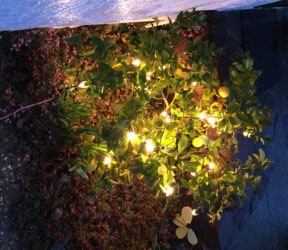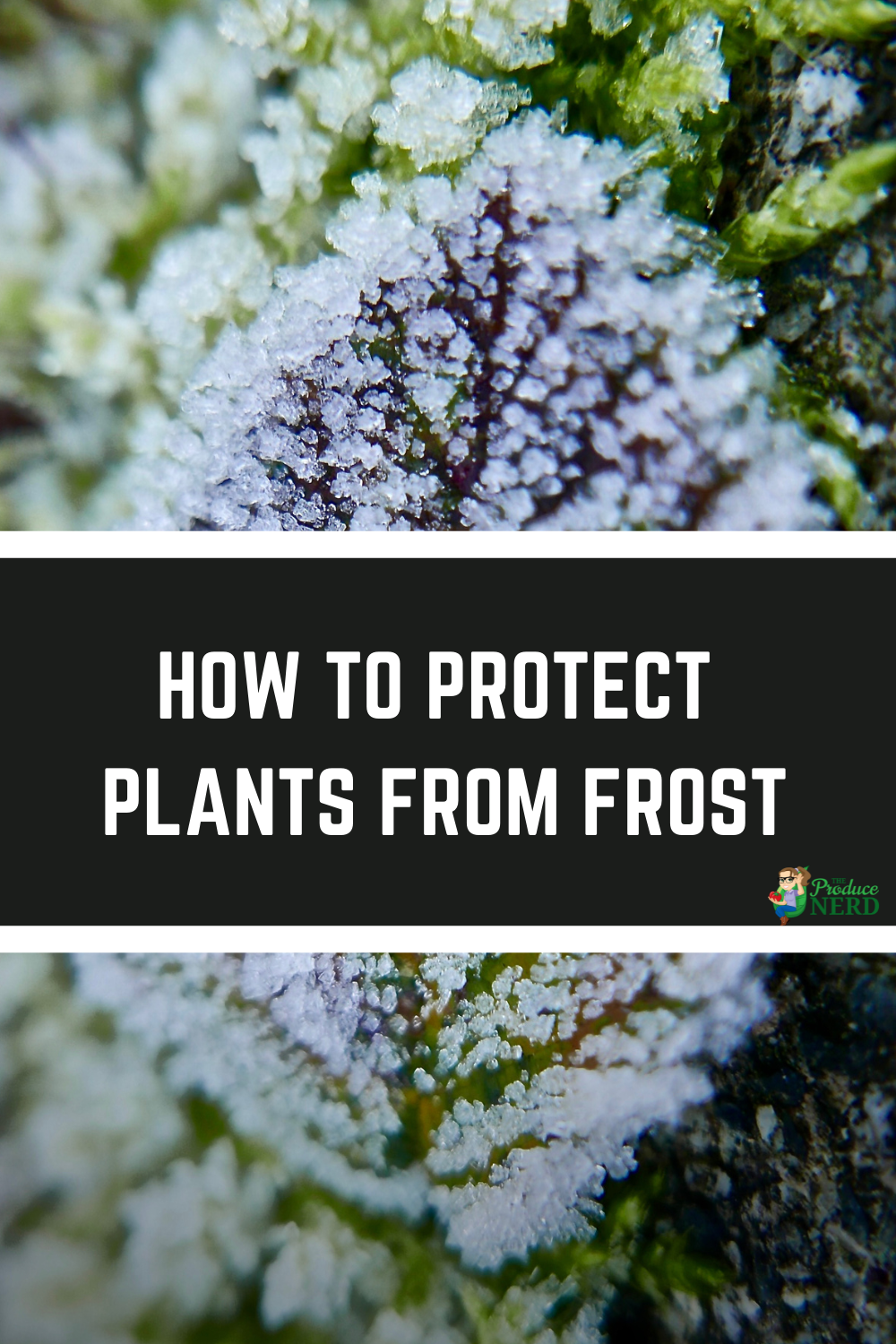With winter in full force, it is important that we do not forget about our outdoor plants! If you have any plants that are frost-sensitive or are thinking of planting frost-sensitive plants, it is important for you to maintain the plant health, monitor the weather and take precautionary measures to protect plants from frost damage.
Table of Contents
Selecting the Right Plants for Your Climate
When choosing a plant for your yard, it is important to consider which cultivars you are planting and if they are capable of growing and surviving in the climate in which you live. For example, with avocado trees, which are sub-tropical fruits, the Hass cultivar that you are used to buying at the grocery store does not grow well in all regions. Therefore, if you are planning to grow an avocado tree, you should research which cultivar will be able to survive the weather conditions in your region. For example, my family lives in climate zone 15, so avocado cultivars that would work for them include Bacon, Fuerte, Jim, Mexicola, Pinkerton and Stewart.
Also, if you live in a climate zone that is prone to frost, you will want to select frost-tolerant plants, such as Brussels Sprouts and carrots. The Sunset Garden books and website can help you determine which climate zone you live in, as well as which plants will be able to survive year-round in that environment.
Where to Plant Plants that are Sensitive to Frost?
Frost-sensitive plants should be strategically planted to reduce the effect of “the elements” on the plants. This includes planting them near a wall, fence, rock wall or shrubs (preferably southwest-facing that will absorb heat during the day and radiate that heat to the plant at night). Frost-sensitive plants should not be planted in the open or in a low area in the yard, since frost will be most harmful in those regions as cold air settles at the lowest point. Frost-tolerant plants can be placed in shadier areas to prevent them from blossoming too early.
How to Protect Container Plants from Freezing?
Container (or potted) plants are easy, as long as you do not forget about them! Container plants need to be brought in at night to protect them from freezing. If they are outdoor plants, you will need to take them back outside during the day to make sure and keep the plants hardy to the cold weather.
How Plant Health Affects Freezing Damage
The healthier the tree, the stronger it will be against frost damage. Other factors include adequate irrigation, growth stage (actively growing or flowering plants are more vulnerable) and age (younger trees are more vulnerable) of the tree. If you have fruit trees, the fruit will be more protected with a fuller canopy.
How Does the Cold Weather Cause Damage to Plants?
Frost damage occurs when ice crystals are able to form on leaves, causing the moisture to be sucked from the leaf tissue. It is most likely to cause the greatest damage on clear nights, as there is no wind to mix the air and no clouds to help radiate heat back to the soil.
Common examples of damage caused include frost damage to shoots, flowers, fruits, death of dormant flower buds, and dieback of leaves, shoots and stems.
When is Cold Weather Most Likely to Cause Damage to Plants?
The greatest damage is most likely to occur after a warm period (including at the end of spring and beginning of fall), when the plant has not been hardened off by the cold weather and is suddenly hit with a cold spell.
How to Protect Plants from Frost & Freeze Damage?
- Frost Cloth – Cover options to use as a frost cloth include: cloth, paper, or sheets and blankets (which will provide minimal protection). If possible, it is best to build a frame around the plant so that the cover is not touching the tree while still surrounding it. When placing the drape, make sure the drape goes all the way to the ground without any bunching or tying, since the idea is for the cloth to drape around the tree to the soil so that heat can radiate from the soil to the tree (all under the cover), which will provide a more humid environment for the tree overnight during the cold conditions.
- Wrap Young Trunks – This method is only needed for young, frost-sensitive trees (e.g., citrus trees) and consists of wrapping the trunk from the ground to the main branches with insulating material (e.g., weatherproof paper, cloth). This insulation can be kept on the tree for the entire duration of winter, but should have an additional plastic layer over it during wet conditions.
- Tree Lights – 100-watt lights or lamps can be placed inside the tree to prevent frost damage. They should be placed below the foliage so that the heat will be able to rise and heat the tree. If holiday lights are used as an alternative, do not use LED lights because they do not produce any heat, and make sure to place them so that they are not touching any cover material.

- Spray with Water – This method is only effective if there is a continuous flow of water sprayed on the leaves and branches until the temperature rises to 37ºF. This is a common method used with citrus trees and grapevines.
- Protect the Bud Union – If the tree has been grafted, you can bunch the soil up to cover the bud union so that the graft can be protected even if the rest of the tree is damaged.
- Wind Machines – Larger produce operations use wind machines, which are large fans, in the orchards to mix the cold and warm air make the soil surface warmer.
- Heaters – Larger produce operations use light heaters spread out throughout the orchards. This is most effective in avocado orchards under colder conditions, using 45-90 heaters per acre.
Covers and preventive measures need to be removed once the temperature warms to 50ºF the next morning to maintain the hardiness of the plant.
When to Remove Freeze Damage Caused to Plants during the Cold Weather?
Pruning should be postponed until the start of spring when new growth starts. Pruning right after the damage occurs may result in pruning new growth, removing leaves and stems that could help trap warm air within the plant during future freezes and risking more frost damage to any new growth that occurs. Any heavy pruning should be postponed until the following year.
If you enjoyed this post, you might also like:
Resources:
Bradley, L. “Frost Protection.” The University of Arizona: Publication AZ 1002, 1998, pp.1-4.
Geisel, P.M. “Frost Protection for Citrus and Other Subtropicals.” University of California ANR Publication 8100 (2003): 1-4. UCANR. Web. 8 Jan 2017.
“Methods of Frost Protection.” UCANR. Web. 8 Jan 2017.
Wright, G.C. “Protecting a Citrus Tree from Cold.” The University of Arizona: Publication AZ 1222, 2001, pp.1-4.


One of our readers wrote in and said that he has successfully used commercial products, specifically Cloud Cover.